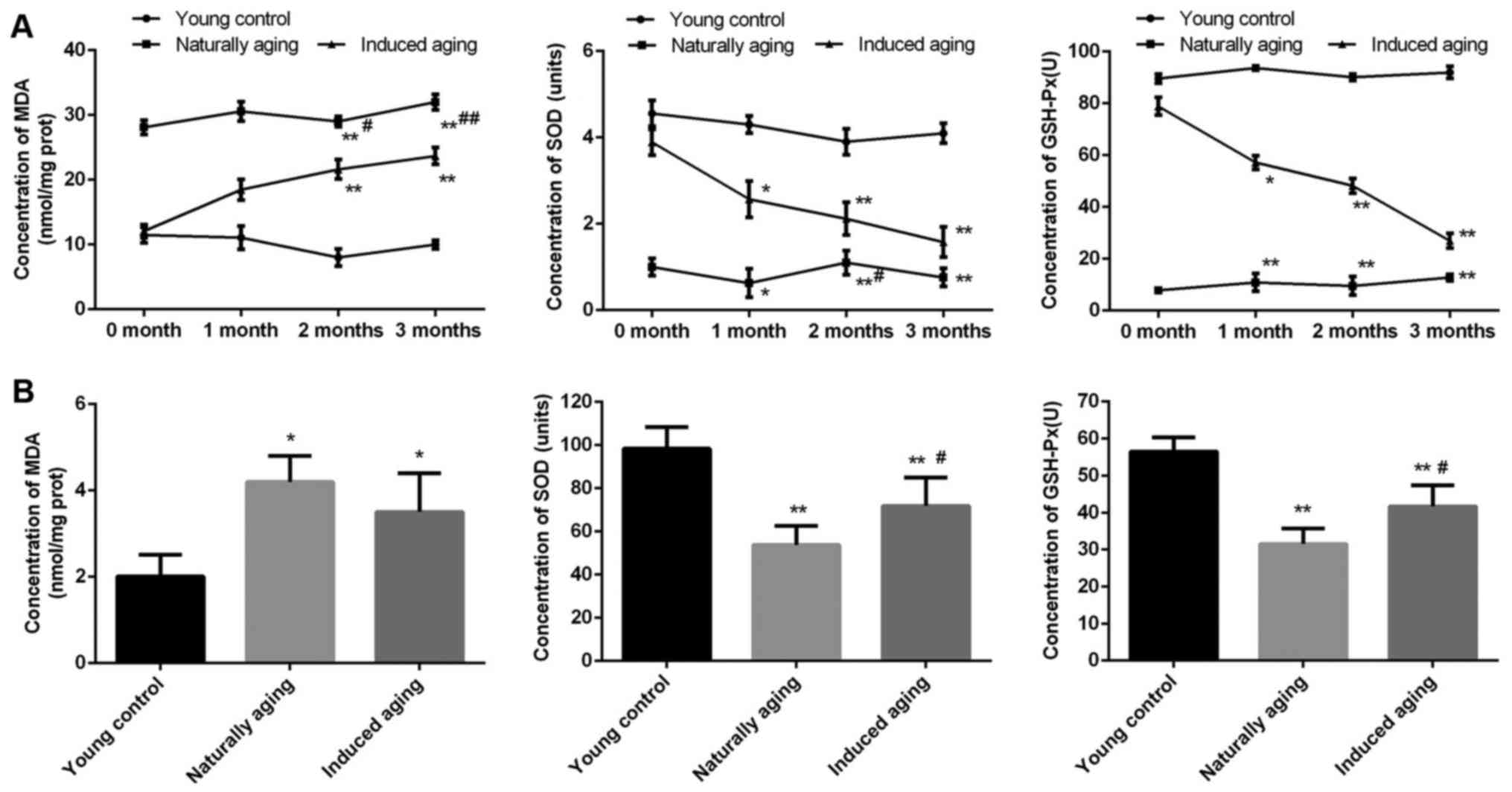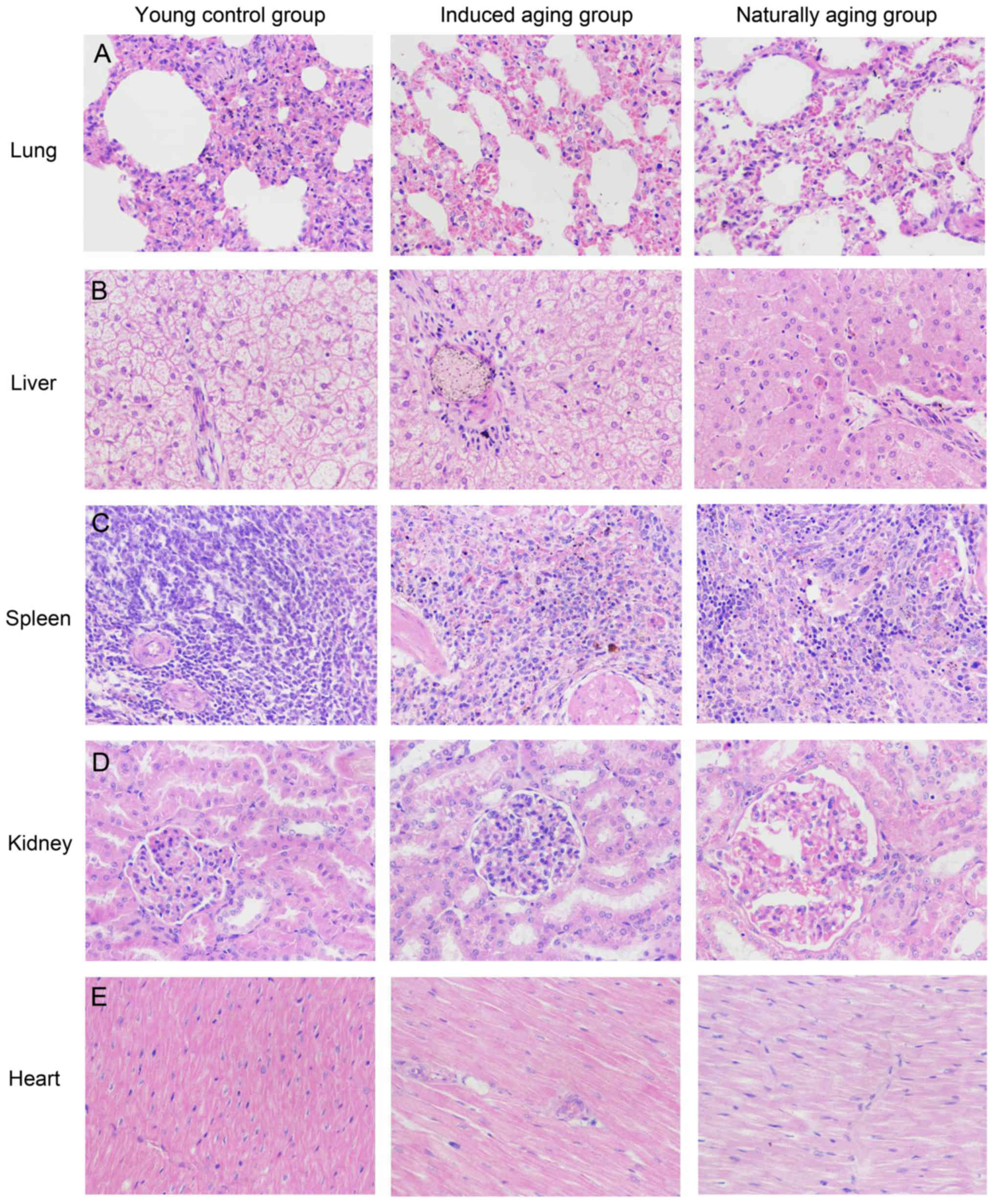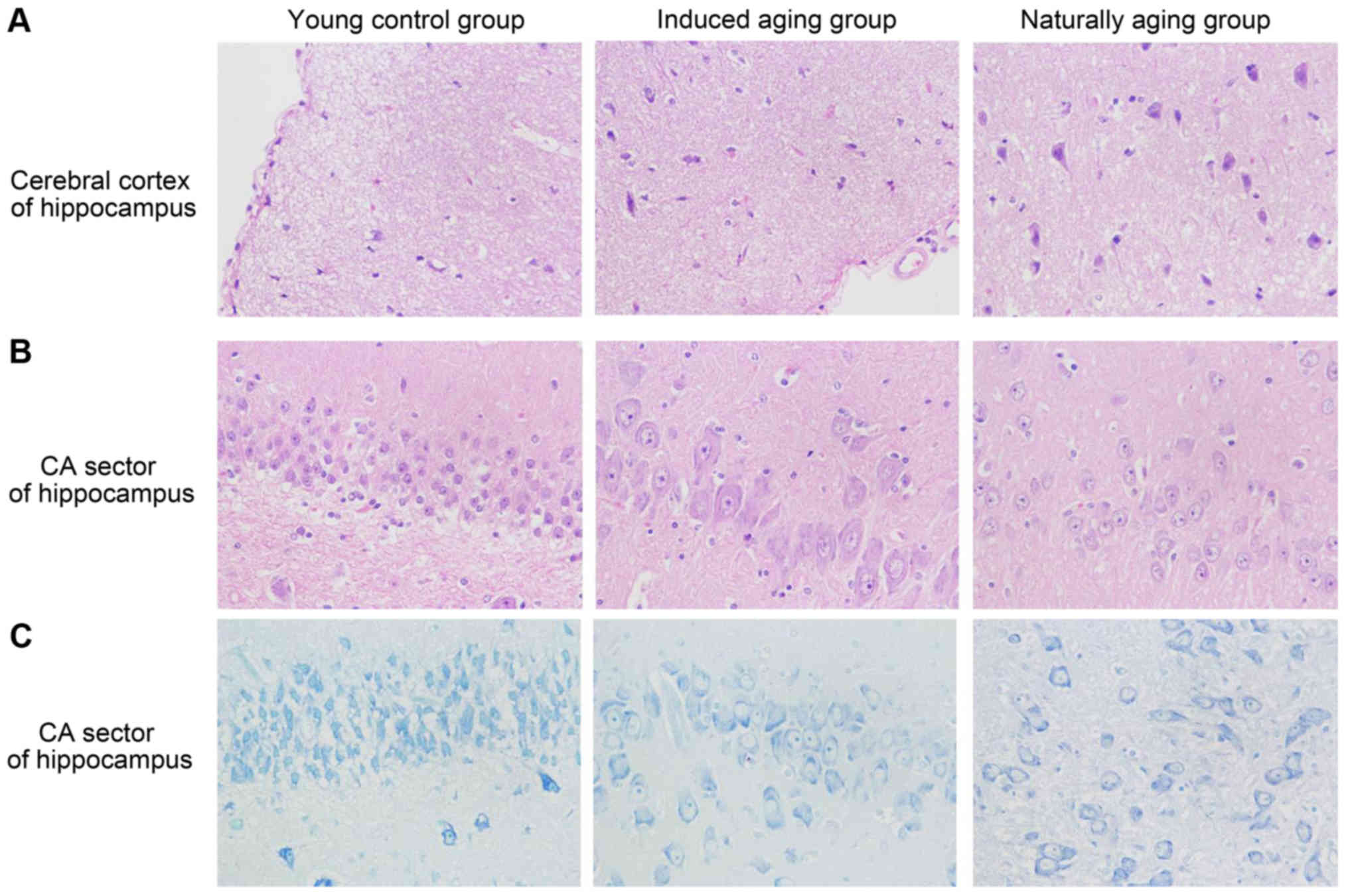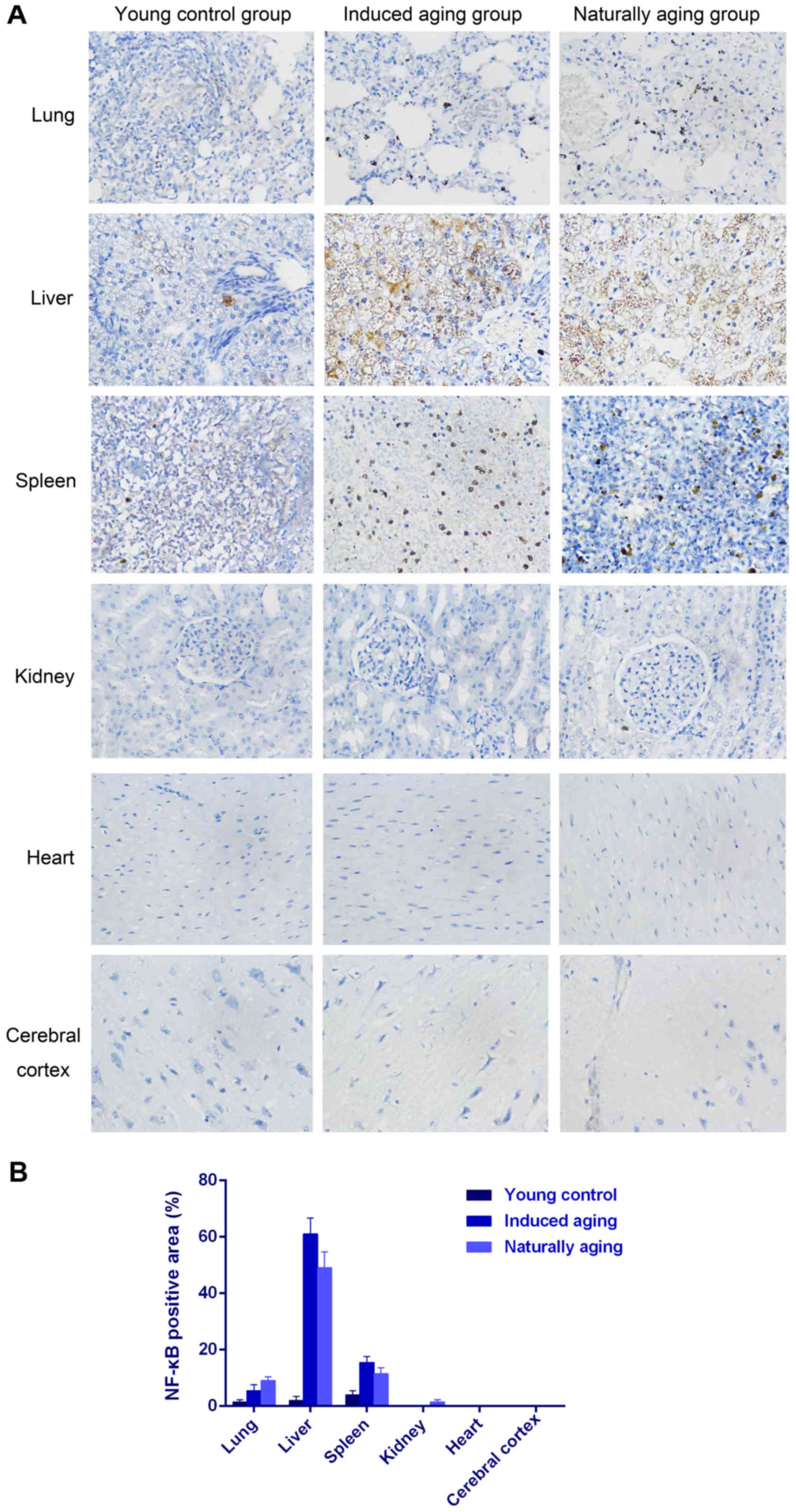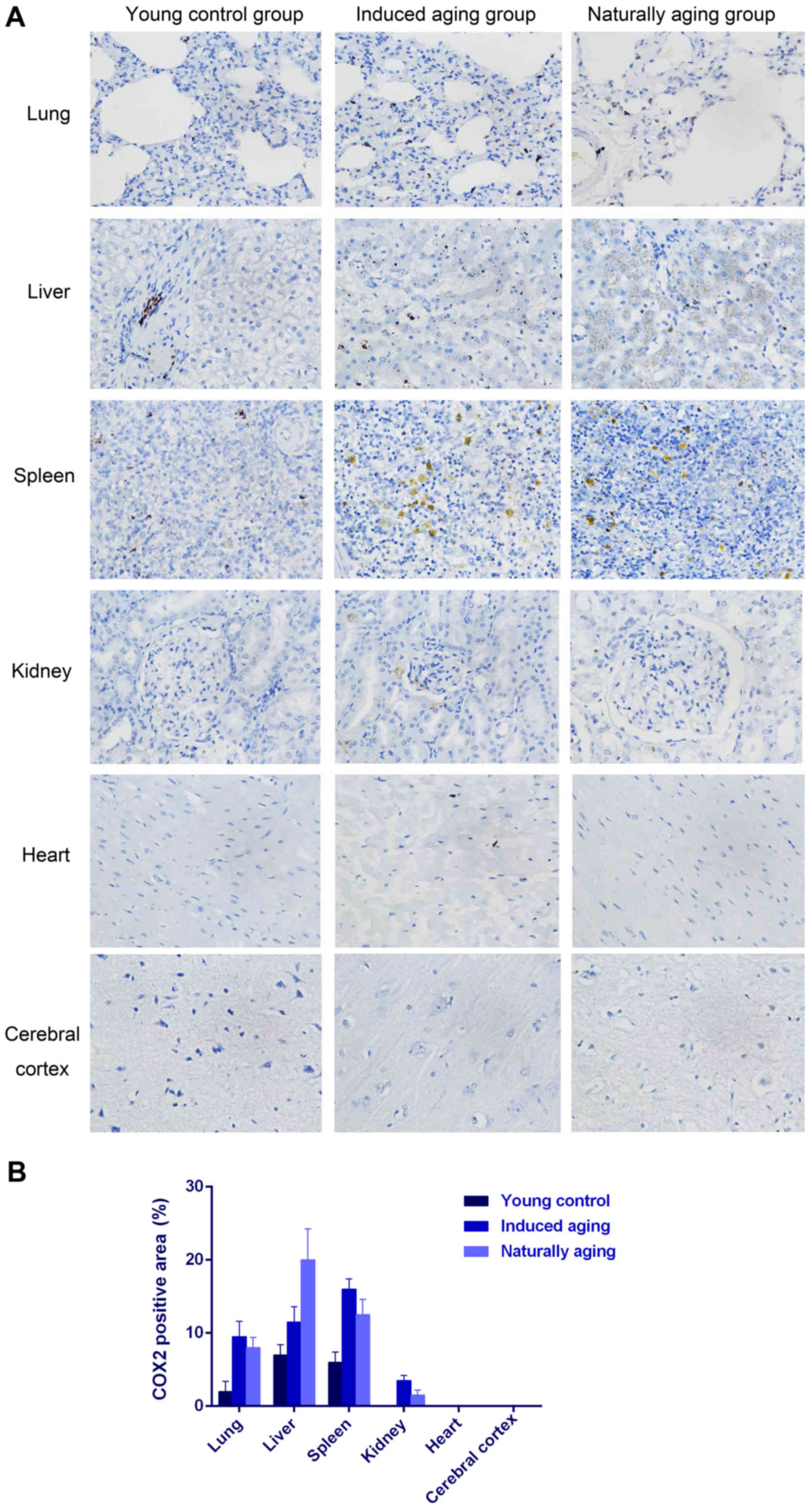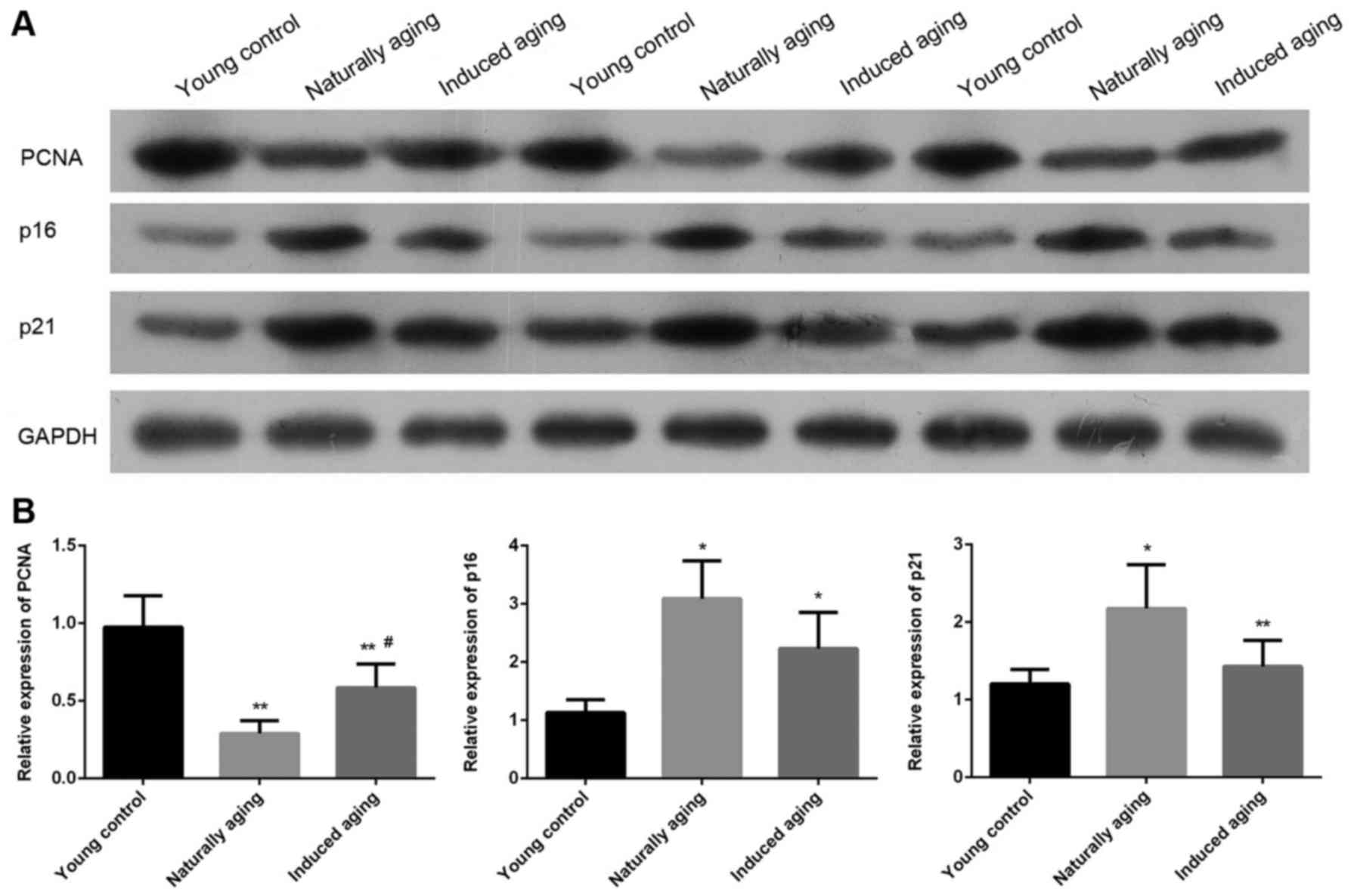|
1
|
Dillin A, Gottschling DE and Nyström T:
The good and the bad of being connected: The integrons of aging.
Curr Opin Cell Biol. 26:107–112. 2014. View Article : Google Scholar : PubMed/NCBI
|
|
2
|
Niedernhofer LJ, Kirkland JL and Ladiges
W: Molecular pathology endpoints useful for aging studies. Ageing
Res Rev. 35:241–249. 2017. View Article : Google Scholar : PubMed/NCBI
|
|
3
|
Marchal J, Pifferi F and Aujard F:
Resveratrol in mammals: Effects on aging biomarkers, age-related
diseases, and life span. Ann NY Acad Sci. 1290:67–73. 2013.
View Article : Google Scholar : PubMed/NCBI
|
|
4
|
Mitchell SJ, Scheibye-Knudsen M, Longo DL
and de Cabo R: Animal models of aging research: Implications for
human aging and age-related diseases. Annu Rev Anim Biosci.
3:283–303. 2015. View Article : Google Scholar : PubMed/NCBI
|
|
5
|
Lees H, Walters H and Cox LS: Animal and
human models to understand ageing. Maturitas. 93:18–27. 2016.
View Article : Google Scholar : PubMed/NCBI
|
|
6
|
Harkema L, Youssef SA and de Bruin A:
Pathology of mouse models of accelerated aging. Vet Pathol.
53:366–389. 2016. View Article : Google Scholar : PubMed/NCBI
|
|
7
|
Liao CY and Kennedy BK: Mouse models and
aging: Longevity and progeria. Curr Top Dev Biol. 109:249–285.
2014. View Article : Google Scholar : PubMed/NCBI
|
|
8
|
Gurkar AU and Niedernhofer LJ: Comparison
of mice with accelerated aging caused by distinct mechanisms. Exp
Gerontol. 68:43–50. 2015. View Article : Google Scholar : PubMed/NCBI
|
|
9
|
Head E: A canine model of human aging and
Alzheimer's disease. Biochim Biophys Acta. 1832:1384–1389. 2013.
View Article : Google Scholar : PubMed/NCBI
|
|
10
|
Bosch MN, Pugliese M, Gimeno-Bayón J,
Rodríguez MJ and Mahy N: Dogs with cognitive dysfunction syndrome:
A natural model of Alzheimer's disease. Curr Alzheimer Res.
9:298–314. 2012. View Article : Google Scholar : PubMed/NCBI
|
|
11
|
Araujo JA, Nobrega JN, Raymond R and
Milgram NW: Aged dogs demonstrate both increased sensitivity to
scopolamine impairment and decreased muscarinic receptor density.
Pharmacol Biochem Behav. 98:203–209. 2011. View Article : Google Scholar : PubMed/NCBI
|
|
12
|
Vasilevko V and Head E: Immunotherapy in a
natural model of Abeta pathogenesis: The aging beagle. CNS Neurol
Disord Drug Targets. 8:98–113. 2009. View Article : Google Scholar : PubMed/NCBI
|
|
13
|
Shahroudi MJ, Mehri S and Hosseinzadeh H:
Anti-aging effect of nigella sativa fixed oil on
D-galactose-induced aging in mice. J Pharmacopuncture. 20:29–35.
2017. View Article : Google Scholar : PubMed/NCBI
|
|
14
|
Liu C, Hu J, Mao Z, Kang H, Liu H, Fu W,
Lv Y and Zhou F: Acute kidney injury and inflammatory response of
sepsis following cecal ligation and puncture in d-galactose-induced
aging rats. Clin Interv Aging. 12:593–602. 2017. View Article : Google Scholar : PubMed/NCBI
|
|
15
|
Parameshwaran K, Irwin MH, Steliou K and
Pinkert CA: D-galactose effectiveness in modeling aging and
therapeutic antioxidant treatment in mice. Rejuvenation Res.
13:729–735. 2010. View Article : Google Scholar : PubMed/NCBI
|
|
16
|
Ho SC, Liu JH and Wu RY: Establishment of
the mimetic aging effect in mice caused by D-galactose.
Biogerontology. 4:15–18. 2003. View Article : Google Scholar : PubMed/NCBI
|
|
17
|
Soria-Valles C, Osorio FG,
Gutiérrez-Fernández A, De Los Angeles A, Bueno C, Menéndez P,
Martín-Subero JI, Daley GQ, Freije JM and López-Otín C: NF-kB
activation impairs somatic cell reprogramming in ageing. Nat Cell
Biol. 17:1004–1013. 2015. View
Article : Google Scholar : PubMed/NCBI
|
|
18
|
Harada CN, Natelson Love MC and Triebel
KL: Normal cognitive aging. Clin Geriatr Med. 29:737–752. 2013.
View Article : Google Scholar : PubMed/NCBI
|
|
19
|
Maes C, Gooijers J, de Xivry Orban JJ,
Swinnen SP and Boisgontier MP: Two hands, one brain, and aging.
Neurosci Biobehav Rev. 75:234–256. 2017. View Article : Google Scholar : PubMed/NCBI
|
|
20
|
Fast R, Schütt T, Toft N, Møller A and
Berendt M: An observational study with long-term follow-up of
canine cognitive dysfunction: Clinical characteristics, survival,
and risk factors. J Vet Intern Med. 27:822–829. 2013. View Article : Google Scholar : PubMed/NCBI
|
|
21
|
Freeman LM: Cachexia and sarcopenia:
Emerging syndromes of importance in dogs and cats. J Vet Intern
Med. 26:3–17. 2012. View Article : Google Scholar : PubMed/NCBI
|
|
22
|
Kim SA, Lee KH, Won HY, Park S, Chung JH,
Jang Y and Ha JW: Quantitative assessment of aortic elasticity with
aging using velocity-vector imaging and its histologic correlation.
Arterioscler Thromb Vasc Biol. 33:1306–1312. 2013. View Article : Google Scholar : PubMed/NCBI
|
|
23
|
Kraus C, Pavard S and Promislow DE: The
size-life span trade-off decomposed: Why large dogs die young. Am
Nat. 181:492–505. 2013. View
Article : Google Scholar : PubMed/NCBI
|
|
24
|
Jucker M: The benefits and limitations of
animal models for translational research in neurodegenerative
diseases. Nat Med. 16:1210–1214. 2010. View
Article : Google Scholar : PubMed/NCBI
|
|
25
|
Borras D, Ferrer I and Pumarola M:
Age-related changes in the brain of the dog. Vet Pathol.
36:202–211. 1999. View Article : Google Scholar : PubMed/NCBI
|
|
26
|
Schriefer JA and Spratto GR: Examination
of dihydrotachysterol-induced progeria as a model for aging changes
in carbohydrate metabolism. J Pharmacol Methods. 3:297–304. 1980.
View Article : Google Scholar : PubMed/NCBI
|
|
27
|
Xing H, Hu X, Liu H, Li Y and Chen Y:
Study on DNA oxidative damage of O3 aging model in mice. Hua Xi Yi
Ke Da Xue Xue Bao. 32:229–231. 2001.(In Chinese). PubMed/NCBI
|
|
28
|
Budni J, Garcez ML, Mina F,
Bellettini-Santos T, da Silva S, Luz APD, Schiavo GL, Batista-Silva
H, Scaini G, Streck EL and Quevedo J: The oral administration of
D-galactose induces abnormalities within the mitochondrial
respiratory chain in the brain of rats. Metab Brain Dis.
32:811–817. 2017. View Article : Google Scholar : PubMed/NCBI
|
|
29
|
Murata M, Ohta N, Fujisawa S, Tsai JY,
Sato S, Akagi Y, Takahashi Y, Neuenschwander H and Kador PF:
Selective pericyte degeneration in the retinal capillaries of
galactose-fed dogs results from apoptosis linked to aldose
reductase-catalyzed galactitol accumulation. J Diabetes
Complications. 16:363–370. 2002. View Article : Google Scholar : PubMed/NCBI
|
|
30
|
Calvert GD and Scott PJ: Properties of two
pig low density lipoproteins prepared by zonal ultracentrifugation.
Atherosclerosis. 22:583–599. 1975. View Article : Google Scholar : PubMed/NCBI
|
|
31
|
Li M, Ouyang W, Wu X, Zheng Y, Wei Y and
An L: Kinetin inhibits apoptosis of aging spleen cells induced by
D-galactose in rats. J Vet Sci. 15:353–359. 2014. View Article : Google Scholar : PubMed/NCBI
|
|
32
|
Stein GH, Drullinger LF, Soulard A and
Dulić V: Differential roles for cyclin-dependent kinase inhibitors
p21 and p16 in the mechanisms of senescence and differentiation in
human fibroblasts. Mol Cell Biol. 19:2109–2117. 1999. View Article : Google Scholar : PubMed/NCBI
|















